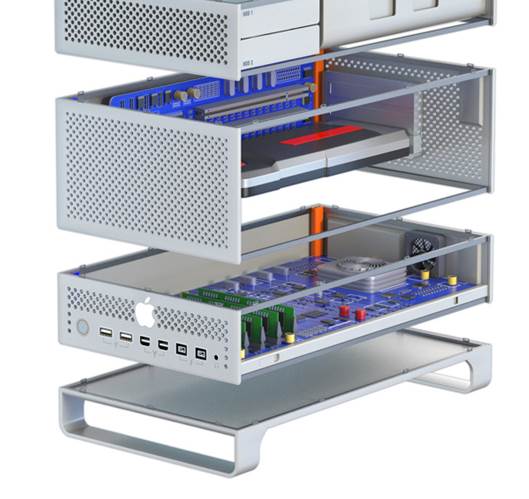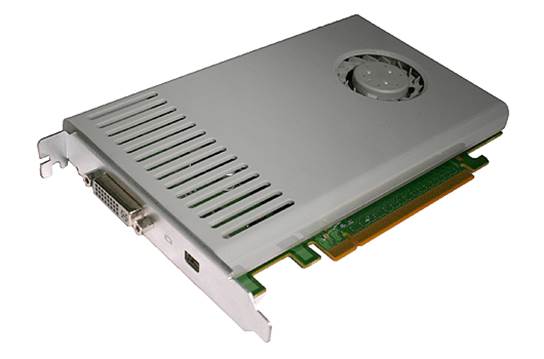New-look Mac Pro
With the new technology mentioned opposite,
a redesigned Mac Pro could be substantially thinner than the current model, and
Apple certainly tends towards the slim as its natural design progression.
But would this be practical for the
traditional user? With a thinner case comes the prospect of Apple creating a
Mac Pro that’s capable of being both a desktop computer and a replacement for
the 4.4cm tall Xserve Rack Apple discontinued in 2010. This would come as
relief for both Mac OS X power users and system administrators, who were left
in a state of limbo after Apple discontinued its rack mount server.

The
slimmer form factor may impact its upgradeability
Whether Apple can pack the power of the Mac
Pro into a 1in thinner case is debatable, though if you look at something like
the HP Z1, you can see how HP has squeezed workstation power into an
iMac-esque case.
The slimmer form factor may impact its
upgradeability though, especially with regard to the PCI Express sockets used
for graphics cards. Apple could include space for an upgradeable card, maybe
two at a push. Or it could elect to have fixed graphics along with the CPU at
the time of purchase. However, upgradeability is important, and for some the
ability to add graphics cards and extra memory at a later date is crucial.
One cosmetic change that seems inevitable
is the removal of the optical drive, which is likely to attract hostility even
in this era of cloud computing and Wi-Fi storage solutions.
Modular design
Another suggestion is that Apple could move
to a modular system for the Mac Pro. At the Consumer Electronics Show in
January, a company called Xi3 revealed a modular computer called the Piston,
and Apple is rumored to be interested in the technology. If it adopted such a
design, it would not sell a single case but several smaller component ‘cubes’
that connect together to form a computer. So you’d buy a processor cube, a
storage cube, a graphics card cube, and so on. These would connect using
Thunderbolt technology. It’s an interesting concept, although whether Apple is
planning such a radical change is debatable.
An iMac Pro
Alternatively, Apple may be planning to
launch a desktop computer that sits somewhere between the iMac, Mac
mini and the current Mac Pro.

A
modular design for the new Mac Pro is shown in this concept image
There are a good number of people for whom
neither the Mac Pro nor the Mac mini is the right fit: they don’t need all the
bays, slots and other geek-wish-list features of the Mac Pro, but the mini
doesn’t offer enough storage or internal expandability. Similarly, some people
won’t buy an all-in-one computer like the iMac because they don’t like the
screen, not to mention that the latest models offer essentially no internal
expandability. A screen less desktop with power-user performance and moderate
expandability is attractive to some.
So how about a minitower with a reasonably
powerful processor; a good graphics card in an upgradeable slot; a decent
amount of upgradeable RAM; two drive bays that could accept either traditional
hard drives or SSDs; and a PCI Express slot?

Video/Graphics
Card NVIDIA GeForce GT 120 512MB Mac Pro 2.26~2.93GHz
Won’t high-end pro users abandon the Mac
platform without a ‘true’ Mac Pro? Some will, there’s no doubt. But many
already have, arguing it’s Apple that’s been slowly abandoning the high-end
market over the past few years. (There’s some evidence for this: token updates
to the Mac Pro, dropping the Xserve and Xserve RAID, major updates to pro apps
that make them seem more consumer than pro-focused, and so on.)
If you consider Apple’s efforts over recent
years to make everything smaller, cooler and less power-hungry, along with the
fact you don’t need massive.